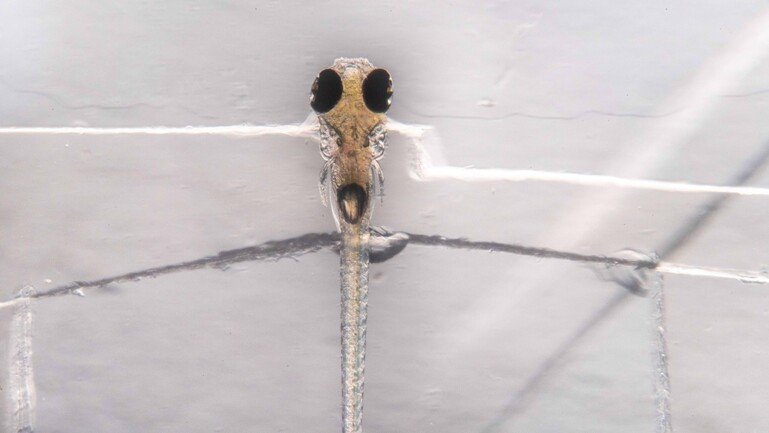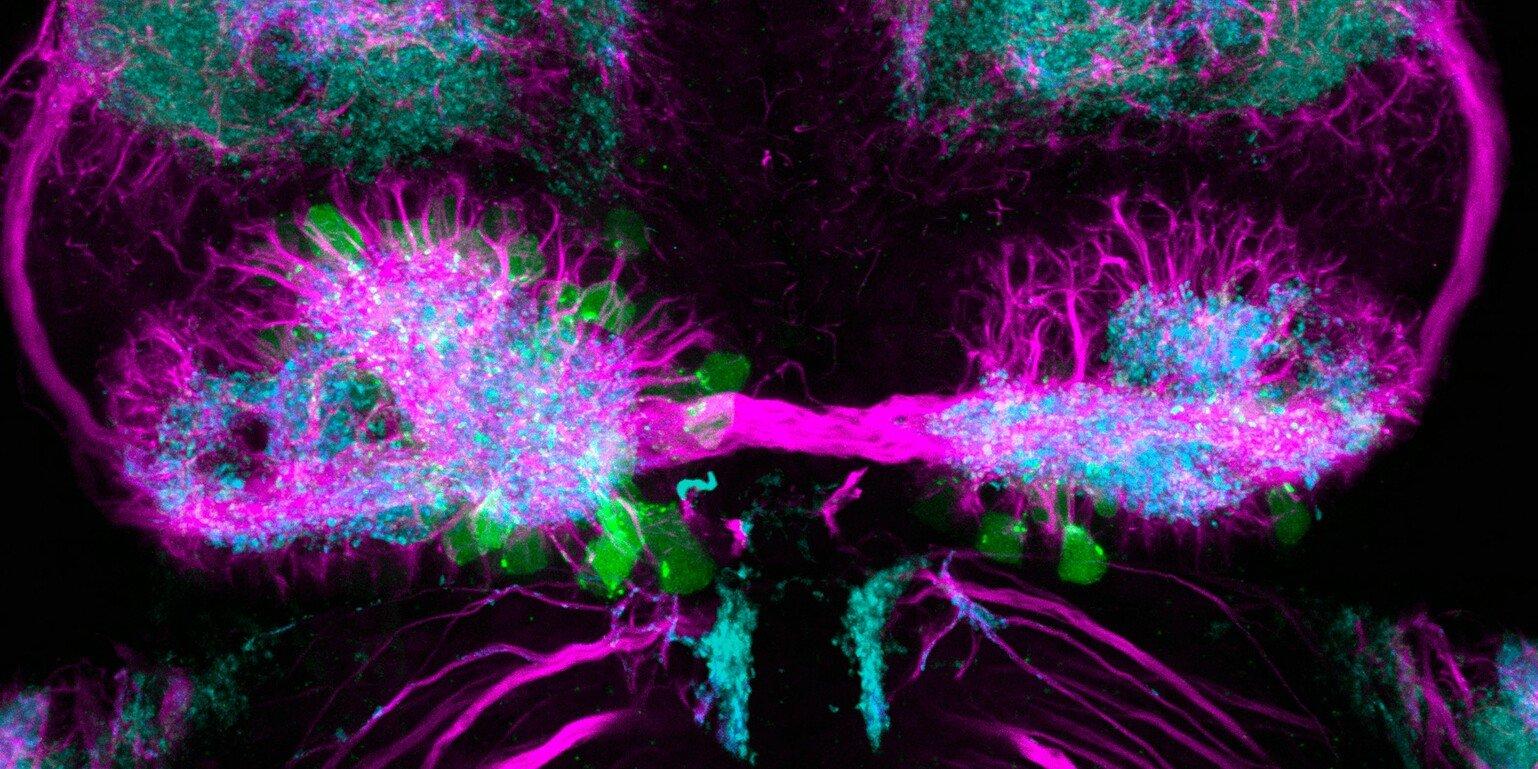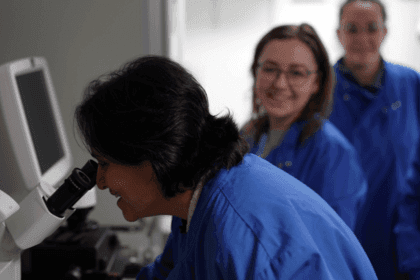
Why does brain asymmetry exist? What factors produce asymmetry between the left and right sides of the brain? What might happen if that asymmetry was lost?
These are just some of the questions Professor Stephen Wilson and Professor Isaac Bianco from University College London hope to answer through their research, ‘Understanding brain asymmetry: from genes and developmental mechanisms to circuits and behaviour’.
With support from our Discovery Research Awards, they are using zebrafish as their animal model system to try and shed light on brain asymmetry at a fundamental level and potentially transform our understanding of this phenomenon.
Wellcome supports bold and creative discovery research that has the potential to improve human life, health and wellbeing.
Our three recurring funding awards:
One-off funding scheme:
Understanding brain asymmetry
The brain and how it works has long been a point of curiosity in science. We know a lot about how neurons and brain circuits work but not so much about how the brain functions as a whole unit.
We’ve gained knowledge about the development and function of structures in different parts of the brain. But why there’s a difference between the left and right sides and how that difference comes about is still one of the brain’s mysteries.
“Brain asymmetries are present across the entire animal kingdom,” says Bianco.
“People have been fascinated by them for many years, but it's really not clear how such asymmetries come about and what purpose they serve.”
Wilson and Bianco’s project will gather data across multiple domains in their goal to gain a deeper understanding of the brain’s right and left hemispheres.
They will look at the genes and molecular processes that lead to some neurons on the left side of the brain becoming different to the neurons on the right side. They’ll also investigate asymmetric circuits across the brain and the behavioural consequences of brain asymmetry.
Wilson explains: “The first step of the project is to try to understand the developmental mechanisms that give rise to the differences between left and right sides – what are the genes and signalling pathways?
“The second part of the project is to ask what is the asymmetry good for? Suppose asymmetry is lost, what's the consequence of that upon the functioning of the brain? And so our work really addresses very fundamental mechanisms of understanding the organisation, the structure and the function of the brain.”
If this research project is able to provide that crucial information, it could lead to a much deeper understanding of the brain. In turn, that might offer valuable insights into what happens when the brain is not functioning properly in various neurological conditions.
Pressing play on the video above will set a third-party cookie. Please read our cookie policy for more information.
Professor Isaac Bianco, Neuroscience, Physiology and Pharmacology, UCL: The brain is probably the most complicated object in the universe, and I think questions about how this sort of remarkable organ that's responsible for all of our thoughts, and feelings and cognition, how it's put together, and how it functions, is really fascinating.
Professor Stephen Wilson, Cell and Developmental Biology, UCL: My name's Steve Wilson, and together with Isaac Bianco, we have a Discovery Award that is looking at brain asymmetry. That is the differences between the left and the right sides of the brain, and our project cuts across all scales going from the genes and molecular mechanisms that establish asymmetry in the brain through to the circuits and the behavioural consequences of brain asymmetry.
Professor Isaac Bianco: Brain asymmetries are present across the entire animal kingdom. People have been fascinated by them for many years, but it's really not clear how those asymmetries come about and what purpose they serve.
Professor Stephen Wilson: The first step of the project is to try to understand the developmental mechanisms that give rise to the differences between left and right sides, what are the genes and signalling pathways? Second part of the project is to ask, what is the asymmetry good for?
Suppose asymmetry is lost, what's the consequences of that upon the functioning of the brain?
And so, our work really addresses very fundamental mechanisms of understanding the organisation, the structure and the function of the brain. Surprisingly, some of our best animal model systems, the mouse, and fly, to date haven't had very good systems for studying nervous system asymmetry, and so the zebrafish as a vertebrate has become a very prominent model system for looking at asymmetries.
Professor Isaac Bianco: One of the main advantages of zebrafish for this type of work is that they have a tiny and optically transparent brain and this allows us to use advanced light microscopy techniques to look at the structure of the brain, but also its activity in behaving animals. We can record these patterns of change and understand how the brain is processing information really at single cell resolution.
Professor Stephen Wilson: One of the easiest types of behaviour to study are visually mediated behaviours because we can show the fish different visual stimuli and see how the fish responds.
Mahum Shaikh, Research Assistant at UCL: The left side of the brain receives visual information. So, if we're mutating a gene which is affecting the habenular, the left side of the brain, we need to figure out whether what we are affecting is visual function, or are we affecting the eye?
What we have here is a freely moving fish. Below it we have a projector which is displaying the stimulus and from above it we have a camera which is going to be measuring or tracking the tail of the fish. We kind of mimic what would happen in real life with fish when they are in the water, if there's water flowing towards them they would swim with it. Essentially this allows us to analyse each different parameter.
Professor Isaac Bianco: I think the really exciting thing about this project is that we have real opportunity to understand brain asymmetry across multiple scales, all the way from genetic and molecular processes which contribute to the development of asymmetries. Through to looking at the function of asymmetric circuits across the entire brain, and characterising in detail animal behaviour, and understanding what effect those asymmetries have.
Professor Stephen Wilson: Discovery research allows the investigator to follow wherever the science is taking them. So we find unexpected results all over the place, and that allows us to pursue different lines of investigation depending upon the results of our previous experiments.
Researching with zebrafish

Zebrafish is a small tropical freshwater vertebrate known for its transparent embryos.
Patrick Shepherd / Wellcome
A crucial aspect of Wilson and Bianco’s research is the involvement of zebrafish, a small tropical freshwater vertebrate known for its transparent embryos. They’re using these fish as their main animal model system.
Zebrafish, which also show sleep, social, hunting and other complex behaviours, are particularly suited to the research required to study brain asymmetry.
“One of the main advantages of zebrafish for this type of work is that they have a tiny and optically transparent brain, and this allows us to use advanced light microscopy techniques to look at the structure of the brain, but also its activity in behaving animals,” Bianco explains.
“We can record these patterns of activity and understand how the brain is processing information really at single cell resolution.”
The team have already started studying different behaviours elicited by visual stimuli with the help of the zebrafish. These studies will help them understand how mutating genes involved in the development of asymmetry impact visually driven behaviours.
“It's very easy for us to alter gene function in zebrafish and look at the consequences of those altered gene functions upon the development of the asymmetries that we're interested in,” Wilson says.

The tiny and optically transparent brain of zebrafish means researchers can observe the structure and activity of their brains and how they process information using advanced light microscopy techniques.
Patrick Shepherd / Wellcome
Following the science with discovery research
The work Wilson and Bianco are doing is transformative research that’s driven by curiosity. They don’t know exactly where it will go but they’re eager to let the science lead them.
“Discovery research allows the investigator to follow wherever the science is taking them,” Wilson says. “So, we find unexpected results all over the place. That allows us to pursue different lines of investigation depending upon the results of our previous experiments.”
This is the kind of research we support through our Discovery Research programme, where we give researchers the space to pursue knowledge in unexpected places and make breakthroughs that could have major implications for our health.
Their project can serve as a vital contribution to understanding not just brain asymmetry but the brain itself and potentially have major repercussions for neuroscience.
"The brain is probably the most complicated object in the universe,” Bianco says, “and I think questions about how this remarkable organ that's responsible for all of our thoughts, feelings and cognition, how it's put together, and how it functions, are fascinating.”




